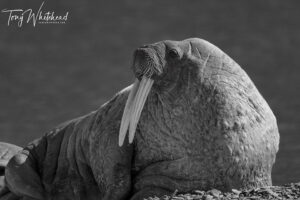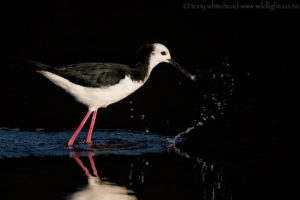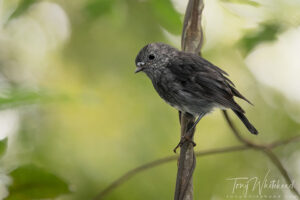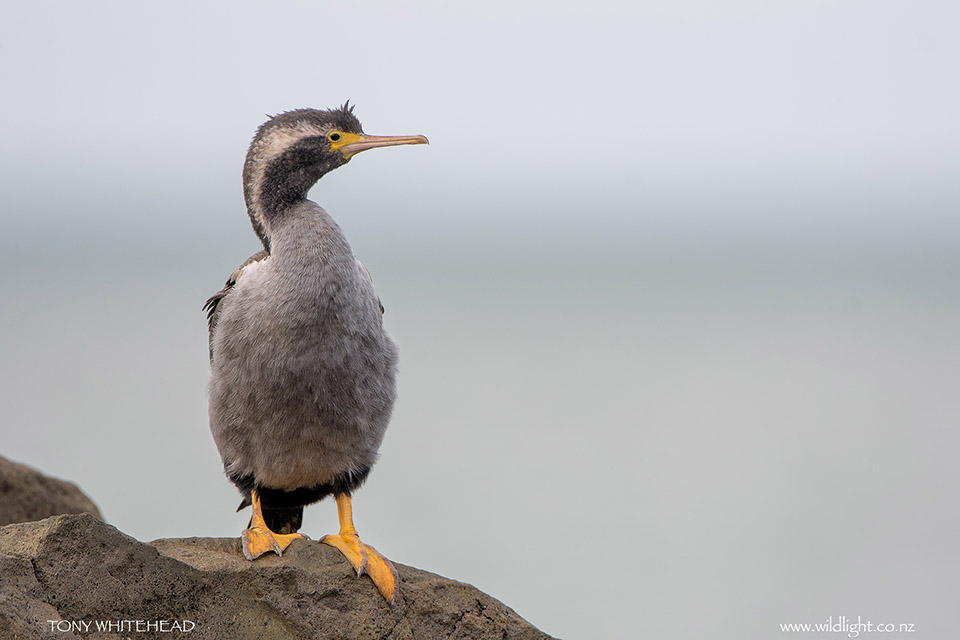
Spotted Shags were another subject I hoped to photograph during our trip to the southern South Island and I was pleased to find a group of mainly young birds on the rocks at Kaka Point. There are small colonies in the north and I occasionally see them on the Coromandel Peninsula but they are a lot more common in the South Island. Worldwide there are 36 species of Shag (or Cormorant) and of these New Zealand is home to 12 so is a world hot spot for this interesting group of birds.
A recent internet-free holiday gave me the opportunity to read The Seabird’s Cry by Adam Nicolson. The chapter on Cormorant and Shag highlighted how they have suffered prejudice as “the most evil bird in English literature”. I had never really been aware of this and have always been quite fond of Cormorants with my first childhood memory of them being in relation to the Chinese fisherman that use their Cormorants to catch fish. To a child enthralled by birds and obsessed with fishing this seemed like an idyllic career option.
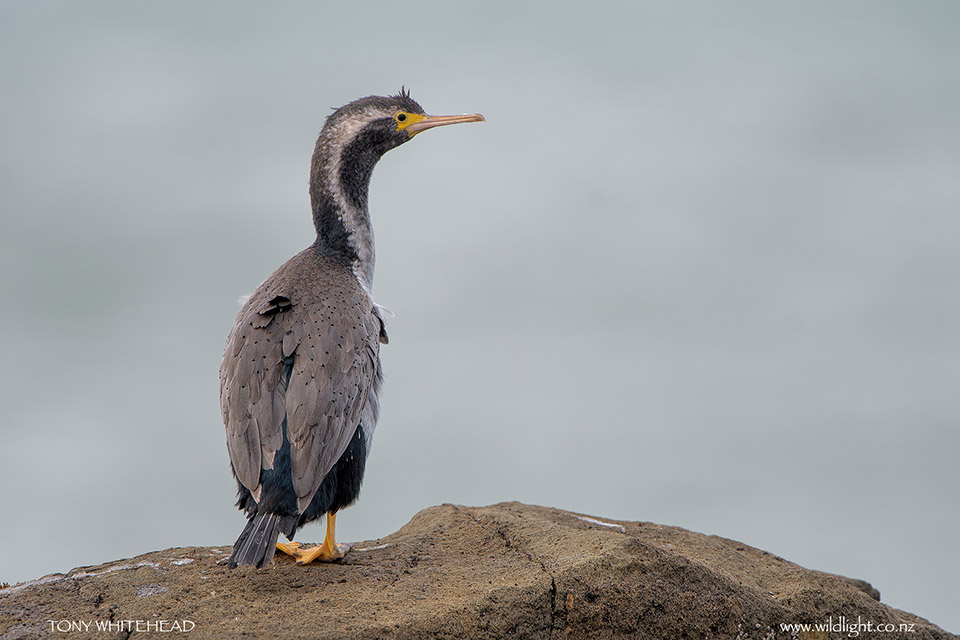
Shags comfortably live on both sides of the air/water interface moving in both media with ease. To achieve this they have unique plumage (that they share with their close relative, the Darter) that has looser edges and soaks up water rather than remaining waterproof. This reduces air trapping which would cause too much buoyancy for their shallow hunting habits. The drawback to this approach is that they need to sit and dry their wings after hunting. Seeing them sitting on rock with outstretched wings facing to the sun is a typical pose.
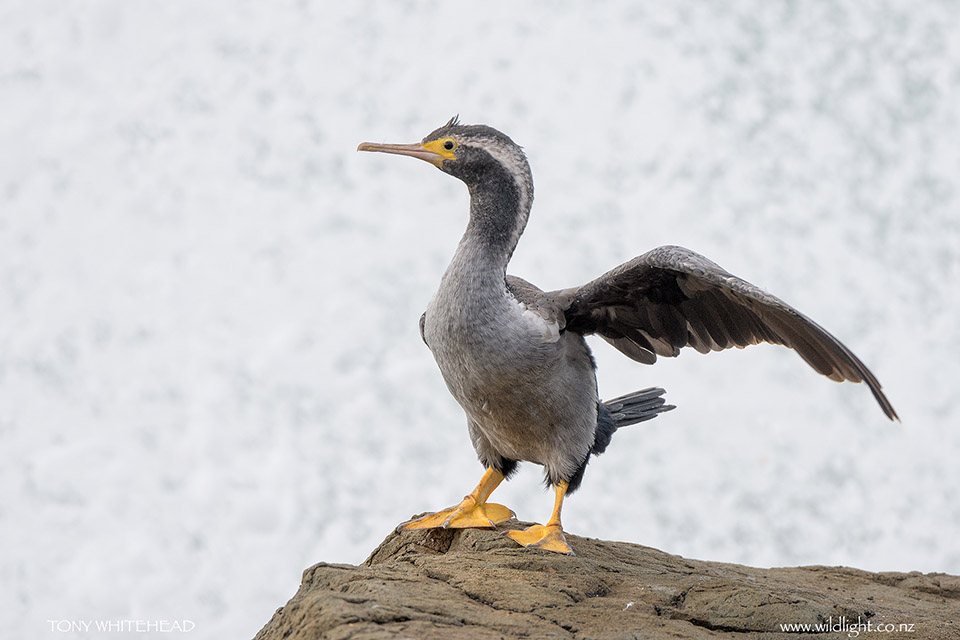
New Zealand Shags are loosely divided into 3 groups by foot colour. Black- footed, pink-footed and yellow-footed. Spotted Shags and Pitt Island Shags make up the yellow-footed group. As can be seen from the photos this is quite an obvious and useful identifying feature.
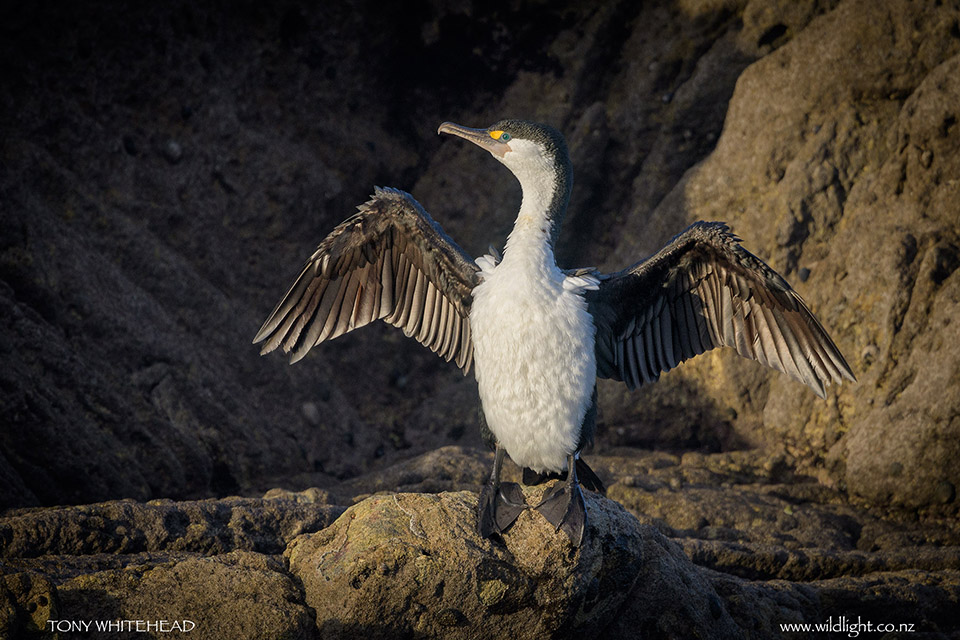
The Spotted Shags here are in non-breeding plumage and develop more dramatic colouring with green facial skin, more defined plumage colours and double crests when breeding. I am hoping to find some in breeding plumage during an upcoming spring trip to the South Island.
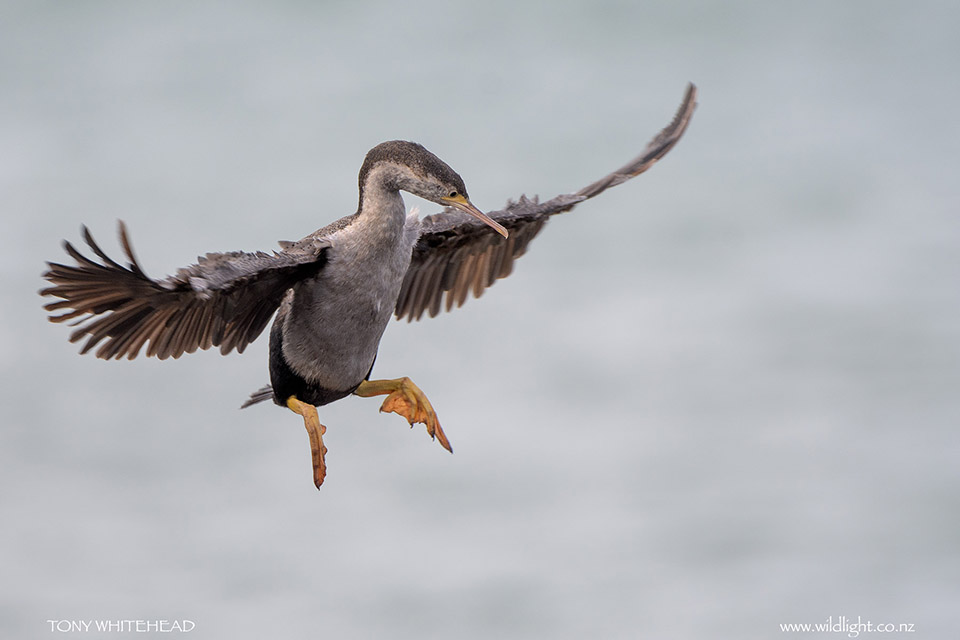
For more information on New Zealand Shags see Te Ara – The Encyclopedia of New Zealand and for more on Spotted Shags with images in breeding colours see NZBirdsOnline
Photos with Nikon D500 and Nikon 500mm f4VR lens with TC14 teleconverter, except Pied Shag with 300mm f4PF lens + TC14.
